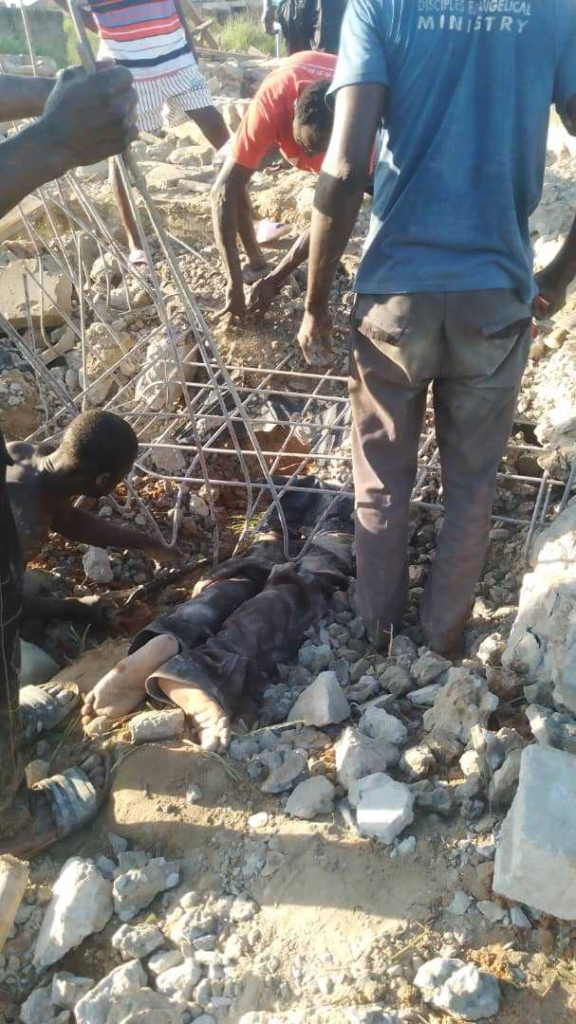A catastrophic building collapse in Sokoban Wood Village, Asokwa Municipality, on October 20, 2024, has resulted in the death of one person and left four others severely injured.
This heart-wrenching incident underscores significant flaws in emergency response capabilities and building safety oversight in the region, raising urgent concerns about public safety.
Despite the swift response from the Ghana Police Service and the Ghana National Fire Service, rescue efforts were severely hindered by ineffective machinery.

Eyewitness Mr. Boadi, a local contractor, expressed his frustration over the situation, noting that the equipment designed to cut through the collapsed iron rods was blunt, greatly impeding efforts to rescue those trapped beneath the rubble.

He lamented the dire consequences of using inadequate tools, revealing that local residents had to step in to assist with the rescue efforts, as the machinery meant to break through the concrete failed.
The tragic event occurred as the building, which had reportedly been neglected for years, collapsed suddenly, tragically taking the life of one individual struck directly by falling debris.
The four injured victims were promptly transported to a nearby hospital for treatment.

Notably, the owner of the building was not present during the incident and remains unharmed, raising further questions about accountability and responsibility for the safety of the structure.
Concerns about the building’s structural integrity were voiced by the local contractor, who stressed that the foundation was weak and the cement work had long expired.
He revealed that the building had recently changed ownership but had not undergone any necessary repairs or reinforcements.
This devastating collapse has ignited alarm over the safety inspection protocols in the Asokwa Municipality, with critics arguing that inspections are limited to permit verification, failing to encompass essential structural assessments.
As Mr. Boadi asserted, “If structural engineers were involved in the inspection process, they would have identified the risks associated with this building.”
![[IMAGES] Building collapse in Asokwa leaves one dead, four injured due to inadequate emergency tools](https://abcnewsgh.com/wp-content/uploads/2024/10/image-123-360x180.png)















![[IMAGES] Building collapse in Asokwa leaves one dead, four injured due to inadequate emergency tools](https://abcnewsgh.com/wp-content/uploads/2024/10/image-123-615x375.png)
















